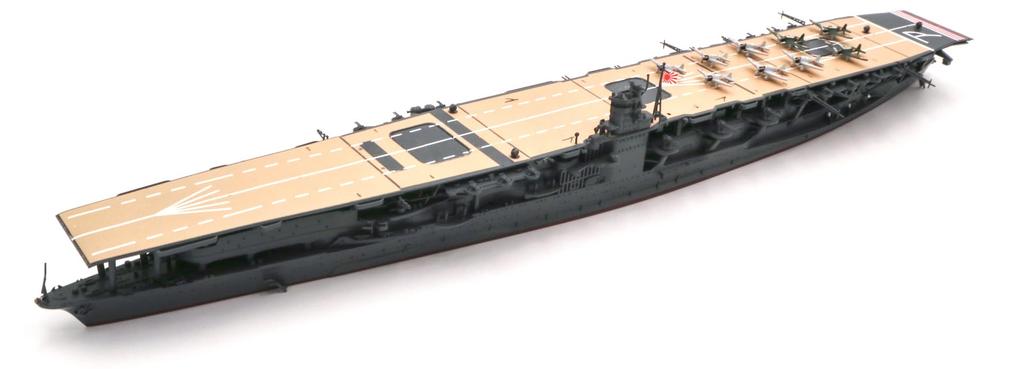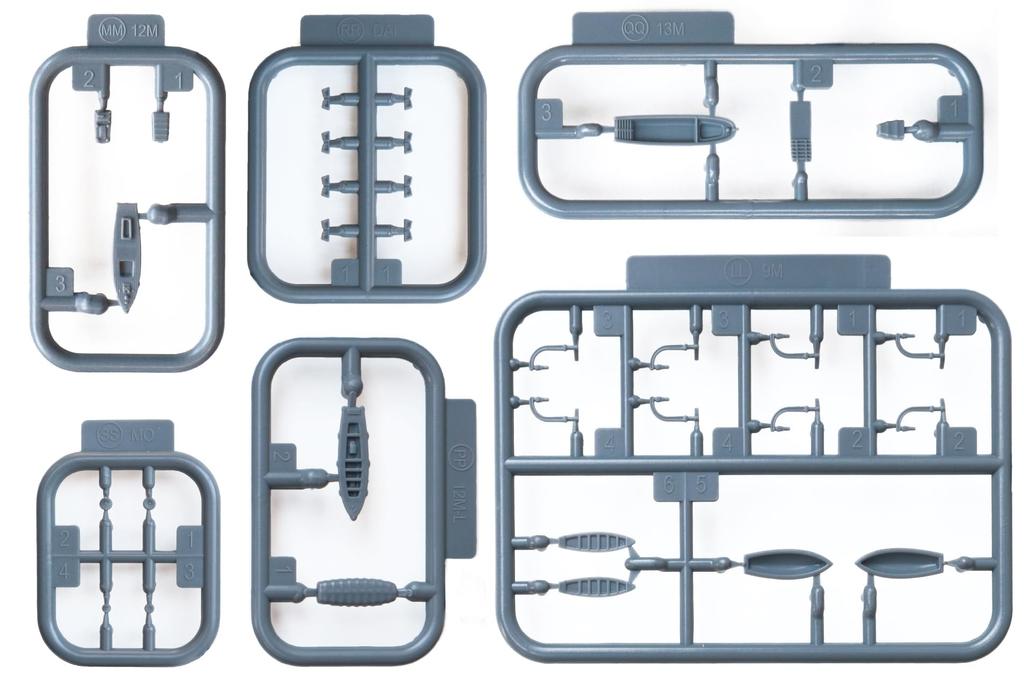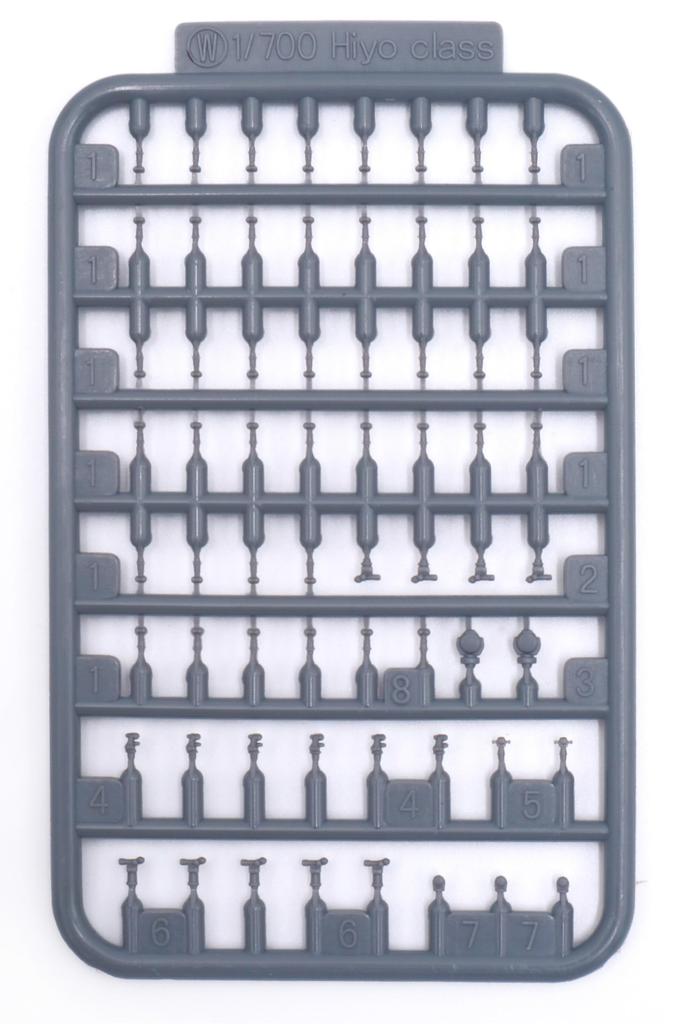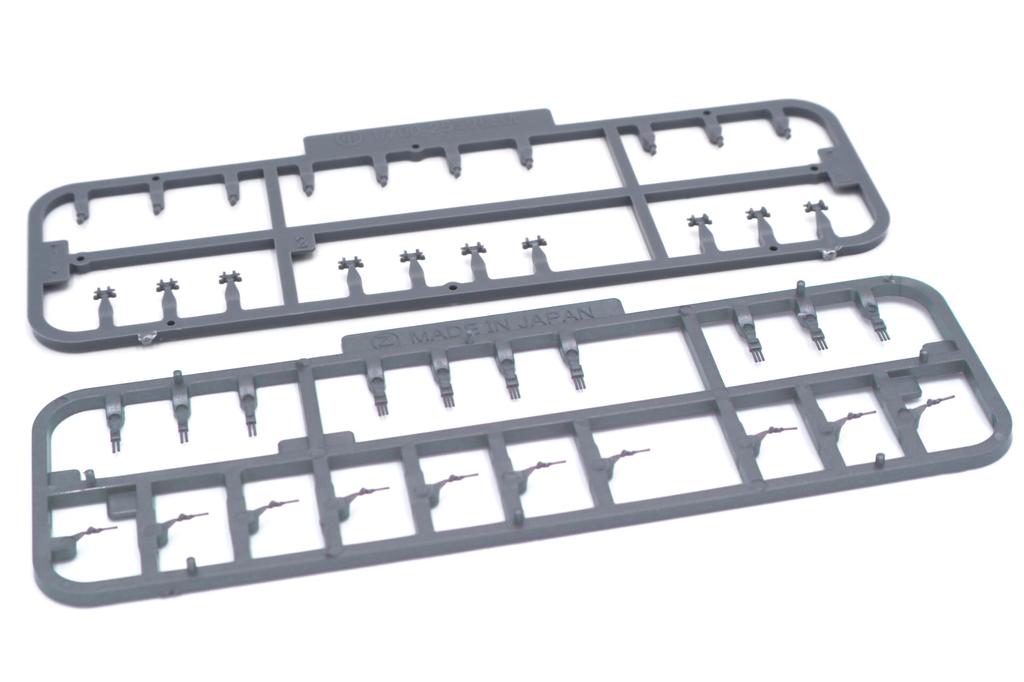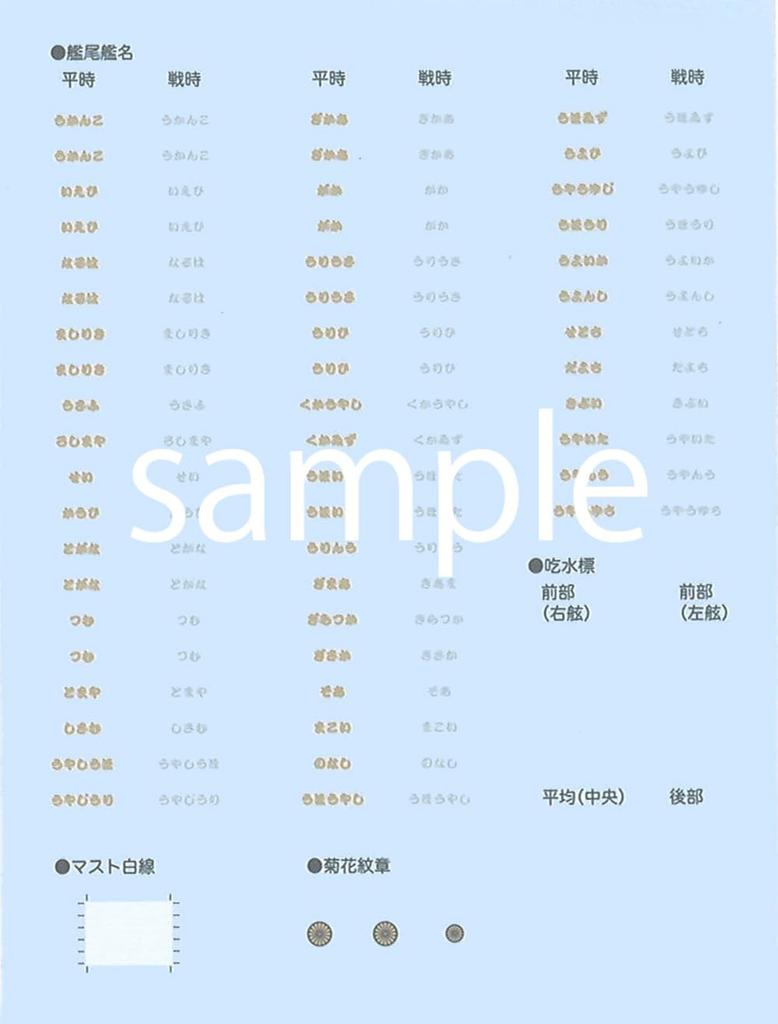This model features detailed parts of the Akagi, the flagship of Nagumo's task force, which led the rapid advance of the Pacific War. This kit adds precision outfitting parts to the standard version, and the aircraft are molded in clear plastic for those who value detail. This is an unpainted kit that requires assembly and painting. The scale is 1/700, and the underside of the ship is not included. It is constructed using molds from the previous (special series) model and newly designed (2021) additional parts. The aircraft carrier Akagi began construction as a battlecruiser under the 8-8 hull plan. However, it was later converted into an aircraft carrier under the Washington Naval Treaty. When completed in 1927, it had a unique shape with three flight decks, but between 1935 and 1938, it was extensively remodeled into an aircraft carrier with a full-length deck. It subsequently became the mainstay of the Imperial Japanese Navy's aircraft carrier force, participating in the attack on Pearl Harbor and the Indian Ocean campaign during the early stages of the Pacific War. The ship was hit by an attack by a US carrier task force during the Midway Island invasion in June 1942. Its aircraft, bombs, and torpedoes caught fire, leading to its disposal by torpedoes from destroyers. (Basic specifications) - This adhesive assembly model features meticulous detailing. - The molding color is primarily gray, allowing for enjoyable painting as it is assembled. - The model is based on the ship's appearance during the attack on Pearl Harbor in December 1941 and the Midway Island invasion in June 1942. - The ship is depicted after the extensive refit completed in 1938, and flight deck markings (decals) are included for the 1941 appearance. - Friend or foe identification (Japanese flag) markings (for the flight deck during Operation MI in June 1942) are included, allowing for assembly in the Midway Island invasion appearance. (Structure, specifications, features) - The hull has a one-piece structure with port and starboard sides - The shape that slopes toward the rear of the ship, the numerous portholes, and the complex shape of the hangar side walls are expressed as one molded part. - The flight deck is a single piece with intricate carvings such as the wooden deck, windbreak fences, and expansion joints. - The double flight deck at the rear of the ship is reproduced with a separate part for the lower level. - The elevator is a separate part. - The anchor chain deck and short boat deck are expressed with delicate carvings such as anti-slip split patterns and rails. - The funnel is a two-part structure with the top and bottom glued together. - The strip patterns on the floor of the anti-aircraft gun mounts and other parts are expressed with intricate carvings. - The truss pillars of the flight deck support (rear) are expressed with carvings on all four sides. - The main parts, bottom plate, machine gun parts, etc. are molded in gray. - Three types of decals are included - One decal for marking aircraft is included. Includes two decals for the stern ship name and the white lines on the deck supports. Includes one decal featuring flight deck markings, the naval ensign, and the flight deck/friendly identification mark (Japanese flag) used during Operation MI in June 1942. Includes 15 aircraft, including five Zero Fighter Type 21s, five Type 99 Carrier Bombers, and five Type 97 Carrier Attack Bombers, molded in clear. Includes a two-part, precisely sculpted 25mm twin machine gun mount for easy painting, with the 2018 mold parts included as standard. *This product is made in Japan. *This is a plastic model kit that requires assembly.
Plastic Model
[Scale] 1/700









